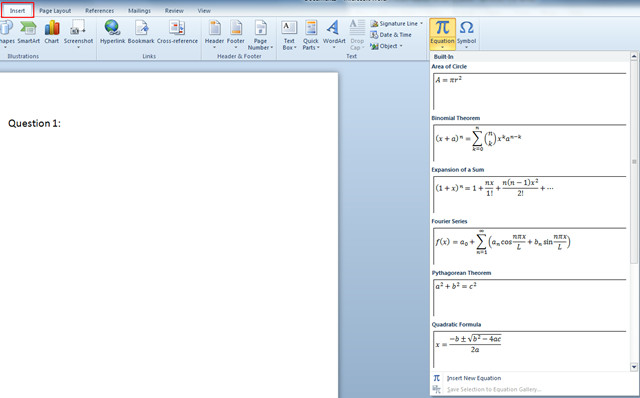

- WORD CONVERT EQUATIONS TO OLD EQUATION EDITOR 3.0 HOW TO
- WORD CONVERT EQUATIONS TO OLD EQUATION EDITOR 3.0 MANUAL
- WORD CONVERT EQUATIONS TO OLD EQUATION EDITOR 3.0 CODE
WORD CONVERT EQUATIONS TO OLD EQUATION EDITOR 3.0 CODE
Them and you could try to generate code for some new parts. You could download the tool from Then you could check the difference between I would suggest you use Open XML SDK Tool to compare this kind of documents and the tool could help generate most of the code. Create two documents, one has some equations and the other doesn't. The following are the XML data for a simple e quation 1+2=3 However, if you create the e quation s by Return new System.IO.MemoryStream(64String(base64String)) Private System.IO.Stream GetBinaryDataStream(string base64String) Private string partData = "183GmgAAAAAAAGAFwAECCQAAAACzWgEACQAAA+EAAAACABwAAAAAAAUAAAAJAgAAAAAFAAAAAgEBAAAABQAAAAEC////AAUAAAAuARgAAAAFAAAACwIAAAAABQAAAAwCwAFgBRIAAAAmBg8AGgD/////AAAQAAAAwP///8b///8gBQAAhgEAAAsAAAAmBg8ADABNYXRoVHlwZQAAMAAcAAAA+wKA/gAAAAAAAJABAAAAAAQCABBUaW1lcyBOZXcgUm9tYW4A/v///6EWCrAAAAoAAAAAAAQAAAAtAQAACAAAADIKYAFqBAEAAAAzeQgAAAA圜mABIAIBAAAAMnkIAAAAMgpgARAAAQAAADF5HAAAAPsCgP4AAAAAAACQAQAAAAIEAgAQU3ltYm9sAAAwlZd1LebqX/7///+PDwolAAAKAAAAAAAEAAAALQEBAAQAAADwAQAACAAAADIKYAE/AwEAAAA9eQgAAAA圜mAB+gABAAAAK3kKAAAAJgYPAAoA/////wEAAAAAABwAAAD7AhAABwAAAAAAvAIAAACGAQICIlN5c3RlbQB1SQCKAQAACgAGAAAASQCKAQAAAABk7RkABAAAAC0BAAAEAAAA8AEBAAMAAAAAAA=" System.IO.Stream data = GetBinaryDataStream(partData) Private void GeneratePartContent(ImagePart part) Public void CreateImagePart(ImagePart part) Adds child parts and generates content of the specified part. So if we want to read its content, we need to export the data as an image. Please see the reflected code of an simple equation(1+2=3) below. Microsoft Equation 3.0 add-in, the e quation content is actually store d asīinary Data in the stream and appended to the document, and then displayed as.

> Is there any way to read the Equation content instead of saving it as Image? Microsoft Word is obviously using some process to convert these ImagesĮquation.DSMT4 ) add-in or the Math Type add-in. While ((len = input.Read(buffer, 0, buffer.Length)) > 0) Public static void CopyStream(Stream input, Stream output) Using (Stream file = File.Create("C:\\Users\\Administrator\\Desktop\\"+"Doc"+i+".wmf")) Stream data = imagePart.GetStream(FileMode.Open,FileAccess.Read) Var imagePart = mainDoc.GetPartById(id.Value) V.ImageData datas = shape.Descendants().FirstOrDefault() If (oleObject.ProgId = "Equation.3")// in your case, ProgId should be Equation.DSMT4įoreach (V.Shape shape in document.Descendants())


MainDocumentPart mainDoc = doc.MainDocumentPart įoreach (Ovml.OleObject oleObject in document.Descendants()) String strDoc = (WordprocessingDocument doc =WordprocessingDocument.Open(strDoc, false)) You can refer to the following code to export all the equation contents.
WORD CONVERT EQUATIONS TO OLD EQUATION EDITOR 3.0 HOW TO
Maybe some of these problems can be solved by a proper configuration.> how to get the content from these files programatically using C# This is my personal experience, I'm not a pandoc expert.
WORD CONVERT EQUATIONS TO OLD EQUATION EDITOR 3.0 MANUAL
Pandoc is a great tool (in my opinion the best amongst the free software), however, a fair amount of manual work may be required after the conversion. While this may look like a not very probable scenario, note that Word 2007 includes these tags automatically, without the writer's knowledge. In my experience, this was the case with some unit conversion tags which allows to automatically convert the document from metric to imperial units etc. Other than that, older versions of Word contain some internal "labels", that are still supported by the new versions, however, when encountered by pandoc, they are completely dropped. by a \subsubsection, which obviously was not the intention. When converted to latex, this text is replaced e.g. For example, some low-level heading can be in Word used "equivalently" to a boldface ("equivalently" in a sense that the output looks the same). I guess that all of these conversions are implemented well, however, in a real Word document, the authors often either do not use the formatting consistently or even wrongly. Other problems arise from complex formatting, e.g. This can be quite easily solved by a replace script that can handle these symbols. One problem comes from utf-8 symbols, such as greek letters, which sometimes appear in the converted document in the original form, not the latex equivalent. In my experience, docx to LaTeX conversion of math works well, provided the document uses the new (now standard) equation editor, not the old equation 3.0 - or whatever the name is - which is still supported in the docx format.


 0 kommentar(er)
0 kommentar(er)
